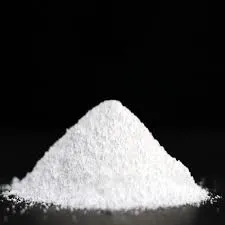Cyanide Removal from Industrial Wastewater Strategies and Technologies
Cyanide compounds are prevalent in various industrial processes, particularly in mining, electroplating, and steel manufacturing. Despite their effective application, their presence in wastewater poses significant environmental and health risks. Proper treatment methods are essential to mitigate these risks and comply with regulatory standards for wastewater discharge. This article discusses various strategies and technologies for the removal of cyanide from industrial wastewater.
Understanding Cyanide Toxicity
Cyanide is a highly toxic substance that can interfere with the body's ability to use oxygen. It exists in different forms, including free cyanide (HCN and CN-) and metal-cyanide complexes. The toxicity of these compounds can lead to severe ecological damage and pose serious health risks to humans and wildlife if not managed correctly.
Importance of Cyanide Removal
Industrial processes often lead to the accumulation of cyanide in wastewater, which can have catastrophic effects if released untreated into the environment. The need for effective cyanide removal methods is underscored by increasing regulations governing industrial discharges and the growing demand for sustainable waste management practices. Removing cyanide not only protects ecosystems but is also crucial for ensuring public health and corporate compliance.
Treatment Technologies for Cyanide Removal
1. Chemical Treatment Oxidation One of the most common methods for cyanide removal is chemical oxidation, where oxidants such as hydrogen peroxide, chlorine, or ozone are used to convert cyanide into less toxic compounds. For instance, sodium hypochlorite can oxidize cyanide to cyanate, which is significantly less harmful.
Neutralization Cyanide can also be neutralized using alkaline substances. This process transforms cyanide into more stable compounds but can produce by-products that require further treatment.
cyanide removal from industrial wastewater

2. Biological Treatment Microbial degradation of cyanide is another promising approach. Certain bacteria possess the ability to metabolize cyanide, converting it into non-toxic compounds. This bioremediation method can be highly effective and environmentally friendly, though it typically requires optimal conditions (e.g., temperature, pH, and nutrient availability) for microbial activity.
3. Physical Treatment Adsorption Adsorption using activated carbon or other adsorbent materials captures cyanide from wastewater. This method is effective for the removal of free cyanide but may require subsequent processing to recover adsorbents and regenerate their capacity.
Membrane Filtration Advanced membrane technologies, including nanofiltration and reverse osmosis, can separate cyanide from water. These techniques are effective in treating wastewater with low concentrations of cyanide but can be costly and require careful maintenance.
4. Advanced Oxidation Processes (AOPs) AOPs combine UV radiation, ozone, and hydrogen peroxide to produce hydroxyl radicals that can mineralize organic contaminants, including cyanides. This method is extremely effective but involves higher operational costs and complexity.
Challenges in Cyanide Removal
While various technologies are available for cyanide removal, several challenges persist. The choice of treatment methods often depends on the concentration of cyanide, the presence of other pollutants, operational costs, and regulatory requirements. Another challenge is the potential formation of toxic by-products during some treatment processes, necessitating additional treatment steps to manage these substances safely.
Conclusion
The removal of cyanide from industrial wastewater is a critical aspect of environmental management that helps protect both public health and ecosystems. Various treatment methods, including chemical oxidation, biological degradation, physical adsorption, and advanced oxidation processes, offer options to effectively mitigate cyanide contamination. However, successful implementation relies on a comprehensive understanding of the specific characteristics of the wastewater and a commitment to ongoing research and development in wastewater treatment technologies. As industries increasingly adopt sustainable practices, improving cyanide removal methods will become vital in ensuring a cleaner and safer environment.

